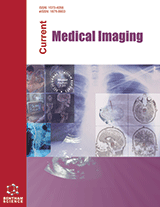
Abstract
18F-Fluoro-2-deoxyglucose positron emission tomography (FDG PET) has demonstrated high accuracy in the staging and evaluation of colorectal and esophageal carcinomas. Current data supports the emerging use for staging and evaluation of recurrence in a number of other gastrointestinal tumors including pancreatic, hepatocellular, and gastric carcinomas, as well as gastrointestinal stromal tumors, cholangiocarcinoma, and carcinoma of unknown primary. The current established and emerging clinical indications, the diagnostic accuracy, and the limitations for GI tumors will be reviewed. The use of combined PET-CT further improves diagnostic accuracy.
Keywords: Positron emission tomography, fluorodeoxyglucose, computed tomography, colorectal cancer, gastrointestinal neoplasms, esophageal cancer, review
Current Medical Imaging
Title: Clinical Utility of Combined 18F-Fluoro-2-deoxyglucose Positron Emission Tomography – Computed Tomography in the Evaluation of Gastrointestinal Malignancies
Volume: 4
Author(s): Bennett B. Chin
Affiliation:
Keywords: Positron emission tomography, fluorodeoxyglucose, computed tomography, colorectal cancer, gastrointestinal neoplasms, esophageal cancer, review
Abstract: 18F-Fluoro-2-deoxyglucose positron emission tomography (FDG PET) has demonstrated high accuracy in the staging and evaluation of colorectal and esophageal carcinomas. Current data supports the emerging use for staging and evaluation of recurrence in a number of other gastrointestinal tumors including pancreatic, hepatocellular, and gastric carcinomas, as well as gastrointestinal stromal tumors, cholangiocarcinoma, and carcinoma of unknown primary. The current established and emerging clinical indications, the diagnostic accuracy, and the limitations for GI tumors will be reviewed. The use of combined PET-CT further improves diagnostic accuracy.
Export Options
About this article
Cite this article as:
Chin B. Bennett, Clinical Utility of Combined 18F-Fluoro-2-deoxyglucose Positron Emission Tomography – Computed Tomography in the Evaluation of Gastrointestinal Malignancies, Current Medical Imaging 2008; 4 (4) . https://dx.doi.org/10.2174/157340508786404107
| DOI https://dx.doi.org/10.2174/157340508786404107 |
Print ISSN 1573-4056 |
| Publisher Name Bentham Science Publisher |
Online ISSN 1875-6603 |
Call for Papers in Thematic Issues
Advancements and Applications of Photon Counting CT: Transforming Imaging Precision and Quantification
Photon Counting Computed Tomography (CT) represents a transformative advancement in medical imaging technology, offering unprecedented levels of precision and diagnostic capability. This special issue will explore the latest innovations and applications of photon counting CT, highlighting its advantages over traditional energy-integrating detectors. The scope includes an in-depth examination of its ...read more
Advancements in Deep Learning based Medical Image and Signal Processing for Healthcare Applications
The accurate predication from medical data (signals and images) analytics will be achieved through the use of cutting-edge AI tools for tailoring medical treatment to each patient. When the agents are done analysing the user's health data, the user can consult with the agents to receive advice and the most ...read more
AI-Driven Diagnostics in Radiology and Medical Imaging
Medical imaging data, such as X-rays, MRIs, ultrasounds, CT scans, and DXAs, can be analysed by AI algorithms to help healthcare professionals identify and diagnose diseases more rapidly and accurately. Among the most cutting-edge applications of artificial intelligence (AI) in healthcare are imaging-related applications like cancer detection. AI could revolutionise ...read more
Applying medical image processing techniques for early cancer detection in mammograms
Breast cancer survival and successful treatment are significantly boosted by early identification. Breast cancer screening is most commonly accomplished with mammography. The radiologist's experience and the image quality, among several other factors, might affect how well a mammogram is interpreted. Enhancing mammography analysis and increasing cancer early detection are made ...read more
Related Books
 2
2
- Author Guidelines
- Graphical Abstracts
- Fabricating and Stating False Information
- Research Misconduct
- Post Publication Discussions and Corrections
- Publishing Ethics and Rectitude
- Increase Visibility of Your Article
- Archiving Policies
- Peer Review Workflow
- Order Your Article Before Print
- Promote Your Article
- Manuscript Transfer Facility
- Editorial Policies
- Allegations from Whistleblowers
Related Articles
-
Update on the Rheumatologic Manifestations of Malignancy
Current Cancer Therapy Reviews Inventions Designed to Enhance Drug Delivery Across Epithelial and Endothelial Cells Through the Paracellular Pathway
Recent Patents on Drug Delivery & Formulation Impact of Oncogenic Protein Tyrosine Phosphatases in Cancer
Anti-Cancer Agents in Medicinal Chemistry Involvement of Cysteine Proteases in Cancer
Current Medicinal Chemistry Current Progress of Reelin in Development, Inflammation and Tissue Remodeling: From Nervous to Visual Systems
Current Molecular Medicine New Molecular Targets of Anticancer Therapy – Current Status and Perspectives
Current Medicinal Chemistry Ocular Toxicities in Cancer Therapy: Still Overlooked
Current Cancer Therapy Reviews The Tumor Stroma as Mediator of Drug Resistance - A Potential Target to Improve Cancer Therapy?
Current Pharmaceutical Biotechnology CD40L - A Multipotent Molecule for Tumor Therapy
Endocrine, Metabolic & Immune Disorders - Drug Targets Personalized Nanoparticles for Cancer Therapy: A Call for Greater Precision
Anti-Cancer Agents in Medicinal Chemistry Clinical Analysis Methods of Voice Disorders
Current Bioinformatics MicroRNA-203: Tumor Suppression and Beyond
MicroRNA HPV as a Model for the Development of Prophylactic and Therapeutic Cancer Vaccines
Current Molecular Medicine Current Status Of Short Synthetic Peptides As Vaccines
Medicinal Chemistry A Pan-Cancer Review of <i>ALK</i> Mutations: Implications for Carcinogenesis and Therapy
Current Cancer Drug Targets Iron Oxide Nanoparticle-induced Oxidative Stress and Genotoxicity in Human Skin Epithelial and Lung Epithelial Cell Lines
Current Pharmaceutical Design MET and ALK as Targets for the Treatment of NSCLC
Current Pharmaceutical Design The PTEN/PI3K/AKT Signalling Pathway in Cancer, Therapeutic Implications
Current Cancer Drug Targets A Family of Pleiotropically Acting MicroRNAs in Cancer Progression, miR-200: Potential Cancer Therapeutic Targets
Current Pharmaceutical Design Growth Factor Signaling and Resistance to Cancer Chemotherapy
Current Topics in Medicinal Chemistry










